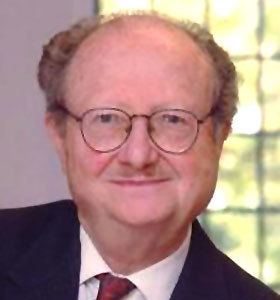Name Pierre Hohenberg Education Harvard University | ||
Pierre hohenberg nyu what is quantum mechanics a minimal formulation
Pierre C. Hohenberg (born 3 October 1934 in Neuilly-sur-Seine) is a French-American theoretical physicist, who works primarily on statistical mechanics.
Contents
- Pierre hohenberg nyu what is quantum mechanics a minimal formulation
- What is quantum mechanics a minimal formulation seminar by pierre hohenberg
- Selected works
- References

Hohenberg studied at Harvard, where he earned his bachelor's degree in 1956, his master's degree in 1958 (after a stay 1956/57 at École Normale Supérieure), and his doctorate in 1962. Afterwards he was from 1962-1963 at the Institute for Physical Problems in Moscow and at the École Normale Supérieure in Paris. From 1964 to 1995 he was at Bell Laboratories in Murray Hill, there from 1985 to 1989 as director of the department of theoretical physics and there from 1989 to 1995 as "Distinguished Member of Technical Staff". At the same time he was from 1974 to 1977 professor for theoretical physics at the TU München, where he was already in 1972-1973 guest professor. From 1995 to 2003 he was "Deputy Provost of Science and Technology" at Yale University. Since then he is at Yale "Eugene Higgins Adjunct Professor of Physics and Applied Physics". Hohenberg was additionally from 1963–1964 and again in 1988 guest professor in Paris and 1990-1991 as Lorentz-Professor in Leiden. In 2004 he became Senior Vice Provost of Research at New York University, a position from which he stepped down in 2011, to join the Physics Department as Professor. In 2012 he became Emeritus Professor.
Hohenberg is also politically active. In 1983 he chairman of the committee of the APS for the freedom of scientists and in 1992-1993 on an APS committee for the support of scientists in the former Soviet Union. From 1984 to 1996 he was on the committee for human rights of the New York Academy of Sciences.
Hohenberg is a member of the American Academy of Arts and Sciences (since 1985), the National Academy of Sciences (from 1989), the American Philosophical Society (since 2014) and the New York Institute for the Humanities (since 2016). He received in 1990 the Fritz London Prize, in 1999 the Max Planck Medal, and in 2003 the Lars Onsager Prize of the APS.
Hohenberg formulated in 1964 with Walter Kohn the Hohenberg-Kohn theorem in the course of his work on density functional theory. He became famous primarily for his investigations in the 1960s and 1970s in the theory of dynamic (i.e. temporally variable) critical phenomena close to phase transitions. He collaborated thereby with Bertrand Halperin, Shang-keng Ma and Eric Siggia in the application of renormalization methods. Additionally Hohenberg worked (with Swift) on hydrodynamic instabilities and on pattern formation in non-equilibrium systems with Michael Cross. Independently of Mermin and Wagner he proved in 1967 the impossibility of spontaneous symmetry breaking in one and two dimensions. More recently, he has presented a new formulation of nonrelativistic quantum mechanics in collaboration with Richard Friedberg.
An accomplished continuous distance swimmer, Hohenberg in the second decade of the 21st century annually contested the artist/writer Richard Kostelanetz in a one-hour race at the NYU Coles pool until the pool was closed. Usually they declare a draw.
